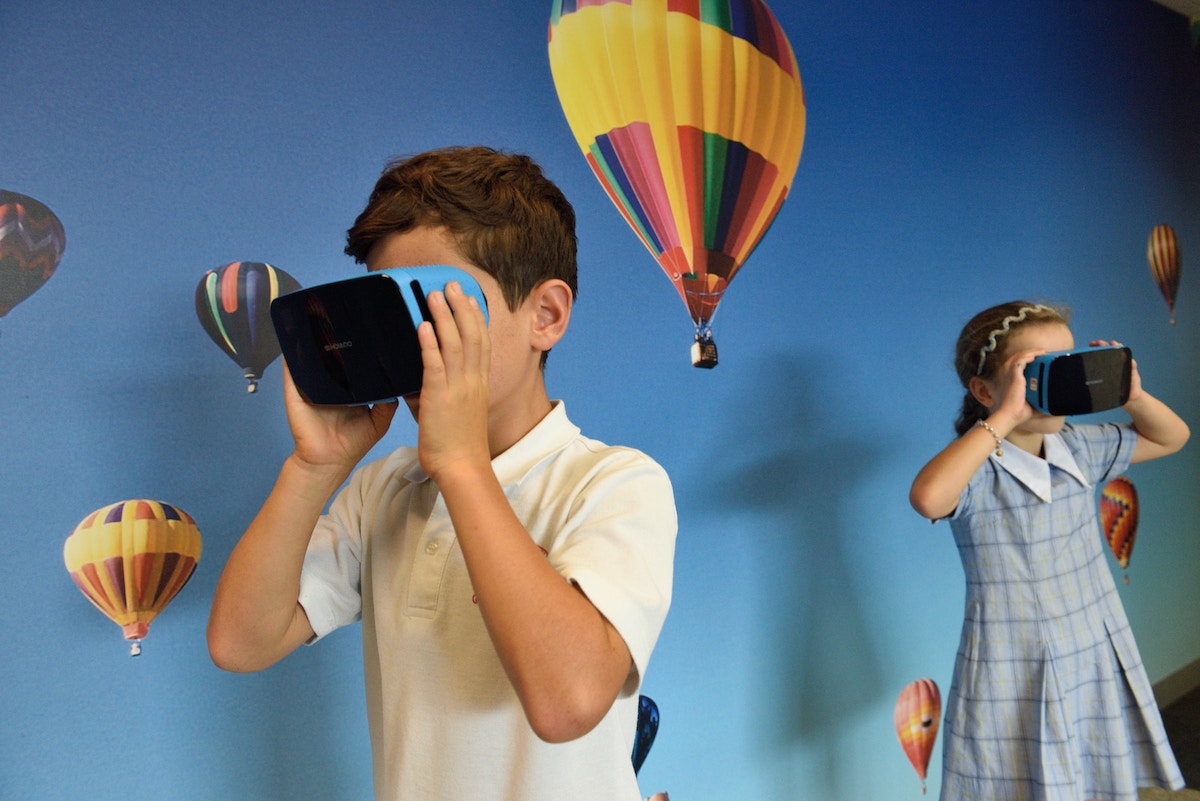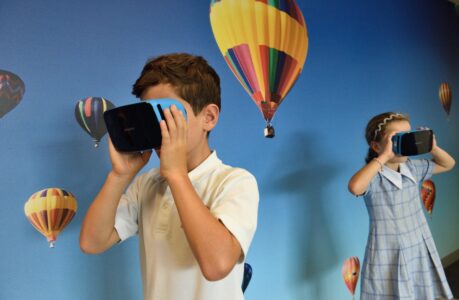Astronomy is a fascinating science that has captivated humans for centuries. From the ancient Egyptians who charted the movements of the stars to modern-day astrophysicists exploring the depths of the universe, there is no shortage of wonder and intrigue when it comes to the cosmos. However, getting kids interested in astronomy can be a challenge in today’s world of screens and instant gratification. Here are some tips to help spark a love for stargazing in children.
Firstly, it’s essential to make Kids astronomy accessible and engaging. Consider investing in a telescope or a pair of binoculars that children can use to explore the night sky. Look for beginner-friendly models that are easy to set up and use, and make sure to choose a clear night with minimal light pollution to enhance the viewing experience. Encourage kids to ask questions and point out interesting celestial objects like constellations, planets, and shooting stars.
Another great way to get kids interested in astronomy is to incorporate it into everyday activities. For example, try reading books or watching documentaries about space and the universe together. Take advantage of free online resources like NASA’s educational materials, which offer a wealth of interactive games, videos, and lesson plans for kids of all ages. You can also visit planetariums, observatories, and science museums in your area to provide hands-on learning opportunities.
In addition, consider joining a local astronomy club or group. Many communities have stargazing events or astronomy clubs that offer opportunities to meet like-minded enthusiasts and participate in group observing sessions. This can be a great way to connect with others who share a passion for stargazing and learn more about the science of astronomy.
Finally, make stargazing a fun and memorable experience. Consider packing a picnic or hot chocolate to enjoy while stargazing, or organize a backyard camping trip to give kids a chance to experience the night sky in a new way. You can also host a stargazing party or invite friends and family over to watch meteor showers or other celestial events.
Getting kids interested in astronomy requires a bit of creativity and effort, but the rewards are well worth it. By making stargazing accessible and engaging, incorporating it into everyday activities, connecting with others who share a passion for the science, and making it a fun and memorable experience, you can spark a lifelong love for astronomy in children. With their curiosity piqued and imaginations ignited, the possibilities for exploring the universe are endless.
Making Kids Astronomy accessible
Astronomy is a fascinating subject that can spark a sense of wonder and curiosity in children. However, it can also seem intimidating or overwhelming, especially if kids don’t have access to the right resources or equipment. Here are some tips for making astronomy accessible to kids:
- Start with the basics: Begin by introducing kids to the basics of astronomy, such as the concept of stars, planets, and galaxies. You can use simple, age-appropriate books or videos to explain these concepts in a way that is easy to understand. Try to find resources that use visuals or hands-on activities to engage kids and help them visualize what they are learning.
- Use binoculars: Binoculars can be a great way to introduce kids to stargazing. They are less expensive than telescopes and easier to use, making them a good option for beginners. Start by pointing out easily recognizable objects like the moon, Venus, or Jupiter, and encourage kids to explore the night sky on their own.
- Visit a planetarium or observatory: Planetariums and observatories can be a great way to introduce kids to astronomy. Many offer interactive exhibits or shows that make learning about the universe fun and engaging. You can also attend stargazing events or observing sessions to give kids a chance to see the night sky through a telescope.
- Use apps and online resources: There are many free apps and websites that can help kids explore the night sky. Apps like SkyView or Star Chart allow kids to point their phone or tablet at the sky and identify constellations, stars, and planets. Websites like NASA’s Kids’ Club or the Space Place offer games, videos, and activities that make learning about astronomy fun.
- Create your own DIY telescope: If you’re feeling crafty, you can create your own DIY telescope using simple materials like cardboard tubes, lenses, and mirrors. There are many tutorials available online that can walk you through the process, and building a telescope can be a fun way to get kids interested in stargazing.
By making astronomy accessible to kids, you can help spark a lifelong love of science and exploration. Whether you’re using binoculars, visiting a planetarium, or creating your own telescope, there are many ways to make learning about the universe fun and engaging for kids of all ages.
Interesting targets for kids
When it comes to stargazing, there are many interesting targets in the night sky that can capture the imagination of kids. Here are some targets that are especially fun and engaging for young stargazers:
- The Moon: The moon is the closest celestial object to Earth, making it an excellent target for stargazing. With a pair of binoculars or a small telescope, kids can observe the craters, mountains, and other features of the moon’s surface. They can also follow the phases of the moon throughout the month and learn about lunar cycles.
- Planets: The planets of our solar system are fascinating targets for stargazing. Venus, Mars, Jupiter, and Saturn are especially easy to observe with binoculars or a small telescope. Kids can see the different colors and sizes of the planets and even observe their moons or rings.
- Constellations: Constellations are patterns of stars that form recognizable shapes in the night sky. Many constellations have interesting myths and stories associated with them, making them a great way to introduce kids to astronomy and mythology. Some popular constellations for kids include Orion, Ursa Major (the Big Dipper), and Cassiopeia.
- Meteor showers: Meteor showers occur when Earth passes through a trail of debris left behind by a comet or asteroid. During a meteor shower, kids can see shooting stars streak across the sky. The Perseid meteor shower in August and the Geminid meteor shower in December are two of the most reliable and active meteor showers each year.
- Satellites and the International Space Station: Kids can also observe satellites and the International Space Station (ISS) as they orbit Earth. There are many apps and websites that can help you track the ISS and other satellites, making it easy to know when they will be visible in your area.
By focusing on these interesting targets, kids can develop a love for stargazing and astronomy that will last a lifetime. Whether they are observing the moon, planets, constellations, meteor showers, or satellites, there is always something fascinating to see in the night sky.
DIY telescopes
A telescope is a great tool for observing the night sky and exploring the wonders of the universe. However, buying a telescope can be expensive, especially if you’re not sure if your child will continue to be interested in stargazing. Luckily, there are many DIY telescope projects that you can do with your kids that are affordable, easy to build, and fun to use. Here are some ideas:
- Simple cardboard tube telescope: A simple telescope can be made with a cardboard tube, a lens, and a few other basic materials. You can find step-by-step instructions online, and the finished product can be used to observe the moon, stars, and other celestial objects.
- Binocular telescope: Binoculars can be repurposed as a telescope by attaching them to a tripod and adding a few additional components. This is an affordable and easy way to create a telescope that is portable and easy to use.
- Dobsonian telescope: A Dobsonian telescope is a type of reflector telescope that is easy to build and provides clear, high-quality views of the night sky. There are many DIY plans available online that provide step-by-step instructions for building your own Dobsonian telescope.
- Refractor telescope: A refractor telescope is another popular type of telescope that can be made at home using basic materials. The main component of a refractor telescope is a lens, which can be purchased online or salvaged from an old camera or telescope.
- PVC pipe telescope: A PVC pipe telescope is a simple and inexpensive project that can be completed in a few hours. The telescope is made by cutting and fitting PVC pipes together, and can be customized to meet your child’s specific needs and interests.
By building their own telescopes, kids can develop a deeper understanding of how telescopes work and gain a sense of ownership over their stargazing equipment. They can also customize their telescopes to suit their interests and explore the night sky in new and exciting ways.

